Detailed introduction of Babeș-Bolyai University:
Introduction and Overview
Name: Babes-Bolyai University in English, Universitatea Babeș-Bolyai in Romania, referred to as UBB.
Location: Located in Cluj-Napoca, Romania, the second largest city in Romania.
Scale: One of the largest universities in Romania, with 48,620 students in the 2021-2022 academic year, including 33,139 undergraduates, 9,543 postgraduates, and 2,239 doctoral students.
History
Origin: Its history can be traced back to 1581, when it was founded by King Stefan Batory as a Jesuit college.
Development: In 1753, Empress Maria Theresa granted the college imperial status; in 1773, after the dissolution of the Society of Jesus, it was managed by the Piarist Order; in 1786, it became a royal academic college; in the 19th century, the Royal University of Hungary was established here; in 1919, the Victor Babis University was established; in 1945, the University of Boya was established; in 1959, the University of Boya and the Victor Babis University merged to form the Babis-Bolyai University.
Establishment time
Officially established in 1959.
School strength
Complete disciplines: Provides courses in Romanian, Hungarian, German, English, French and other languages, covering multiple disciplines such as medicine, law, economics, literature, science, engineering, and art.
Degrees awarded: Bachelor, master and doctoral degrees can be awarded, with a rich range of disciplines for students to choose from.
Research achievements: It is a research university in Romania. It has certain research achievements in mathematics, physics, chemistry, biology, medicine, law, economics and other disciplines. It has established cooperative relations with many universities and research institutions at home and abroad.
Nature of the institution
It is a public research university.
Educational philosophy
It emphasizes tradition and excellence, focuses on cultivating students' comprehensive quality and innovation ability, encourages students to learn and research across disciplines, and is committed to providing students with high-quality education and scientific research environment, so that students can be competitive in the context of globalization.
Key laboratories and disciplines
Medical School: It has strong strength in the field of medicine, especially clinical medicine and pharmacy. It has advanced experimental equipment and clinical teaching bases and has cultivated many outstanding medical talents.
School of Mathematics and Computer Science: The discipline of mathematics has a certain reputation in Romania and even internationally. The major of computer science is also developing continuously. It focuses on the combination of theory and practice, providing students with a good learning and research environment.
School of Environment and Nature: It has carried out extensive research and teaching work in the fields of environmental protection and ecology. It has multiple laboratories and research centers, dedicated to solving environmental problems and promoting sustainable development.
Faculty
There are several colleges and faculties, including the School of Economics, the School of Humanities, the School of Arts, the School of Science, the School of Engineering, the School of Computer Science and Information Technology, the School of Art and Communication Media, the School of Fine Arts and Art Design, the School of Medicine, the School of Environment and Nature.
Ranking
QS World University Rankings: Ranked 781-790 in 2025.
U.S. News Global Best University Rankings: Ranked 717th, and ranked 2nd in Romania.
Expenses
Tuition fees vary depending on the major and degree level. Generally, the annual tuition fee for undergraduates is around 2000-3000 euros, and the annual tuition fee for masters is around 3000-5000 euros. The tuition fee for doctoral students is relatively low or there is scholarship support. Living expenses are about 500-1000 euros per month.
Campus environment
Architectural style: The campus has a variety of architectural styles, including both ancient buildings with a long history and modern teaching buildings and scientific research facilities, reflecting the integration of tradition and modernity.
Learning facilities: The school has complete library, laboratories, computer centers and other learning facilities, providing students with good learning conditions.
Living facilities: The school has complete student cafeterias, dormitories and other living facilities. The dormitory types are diverse, ranging from single rooms to five-person rooms. There are also various shops, restaurants and entertainment venues around, which are convenient for students' daily life.
-

Grigore T. Popa University of Medicine and Pharmacy
-
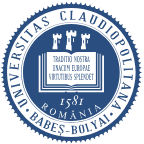
Babes-Bolyai University
-
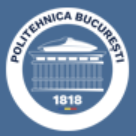
Politehnica University of Bucharest
-
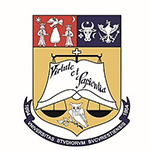
University of Bucharest
-
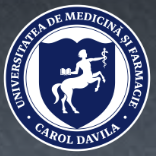
Carol Davila University of Medicine and Pharmacy
-
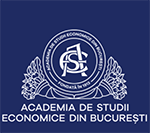
Bucharest Academy of Economic Studies
-

Technical University of Cluj-Napoca
-

1st December 1918 University of Alba Iulia
-

West University of Timisoara
-
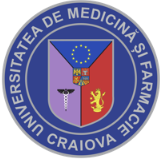
University of Medicine and Pharmacy of Craiova
-

Mesoamerican University
-

Istmo University
-

Mariano Galvez University of Guatemala
-

Regional University of Guatemala
-

Galileo University
-

Francisco Marroquín University
-

Rafael Landívar University
-

University of the Valley of Guatemala
-

University of San Carlos of Guatemala
-

Technological Institute of Tlaxcala Plateau
-

Golfo University
-

Technological University of South Sonora
-

Technological University of Huejotzingo
-

Tizimín Institute of Technology
-

Chilpancingo Institute of Technology
